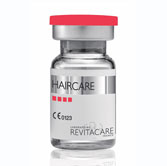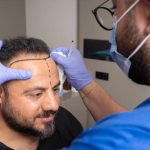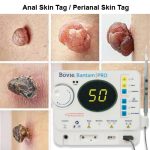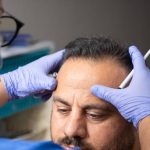
SEBORRHEIC DERMATITIS | CAUSE & TREATMENT | HAIR LOSS CLINIC TORONTO
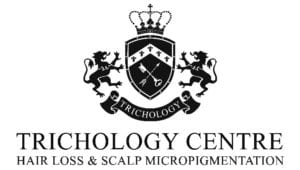
FREE HAIR LOSS ASSESSMENT FORM
What is Seborrheic Dermatitis?
Seborrheic dermatitis is a common skin disorder that mainly affects the scalp, eyebrows, sides of the nose, and behind the ears. The condition tends to occur in oily skin areas.
Seborrheic dermatitis causes scaly, itchy, red skin and dandruff. In infants, seborrheic dermatitis of the scalp is known as cradle cap.
Seborrheic dermatitis isn’t a contagious condition, and it’s not a sign of poor personal hygiene. It doesn’t affect overall health but can be uncomfortable and can cause embarrassment if seen in visible parts of the body.
It is unknown what causes seborrheic dermatitis, although genes and hormones play a role. Microorganisms such as yeast, that live on the skin naturally can also contribute to seborrheic dermatitis.
Characteristic of Seborrheic Dermatitis
- Inflammation and erythema (redness) patches on the scalp. Patches of scaling on the scalp.
- Dandruff (either yellow or white) on the scalp, eyebrows, beard, or mustache.
- Scalp itching and/or tenderness.
What Treatment is Available for Seborrheic Dermatitis?
There is no cure for seborrheic dermatitis. Certain treatments are available to help with the condition and help manage the inflammation and itchiness.
The best treatment for seborrheic dermatitis is frequent cleansing. Medicated soaps or shampoos containing zinc pyrithione, ketoconazole, selenium sulfide, or tar give additional benefit. These should be applied to the affected area and left on for 5-10 minutes before being rinsed off.
Foods to Avoid that May Trigger Seborrheic Dermatitis
Some common foods may trigger a seborrheic dermatitis flare-up. Avoid foods that promote yeast growth such as bread, cheese, wine, and beer. Consider taking an omega-3 supplement. Consider taking a good-quality multivitamin and possibly adding extra biotin.

What’s the Difference Between Eczema, Psoriasis, and Seborrheic Dermatitis?
The 3 conditions often get confused with each other, but they are uniquely different from each other.
| Skin Condition | Symptoms | Onset of condition and Affected Areas | Triggers | Causes and Other factors |
|---|---|---|---|---|
| Eczema | Eczema is the name for a group of conditions that cause the skin to become red, itchy and inflamed. Symptoms: Dry, sensitive skin. Red, inflamed skin. Very bad itching. Dark colored patches of skin. Rough, leathery or scaly patches of skin. Oozing or crusting. Areas of swelling. | Onset: Condition usually starts as a baby. Affected Areas: Appear on the feet, hands and nape of neck. If condition appears on the elbows and knees, it is appearing on the back of the elbows and front of the knees. | Allergens like dust mites, pets, pollen, mold. Foods like eggs, nuts and seeds, soy products, and wheat. | Causes: genes dry skin an immune system problem triggers in the environment Most common type is known as Atopic Dermatitis. It is an Atopic disease involving immune system, including atopic dermatitis, asthma, and hay fever. Commonly found in families with a history of other allergies or asthma. |
| Psoriasis | Skin disorder that causes skin to multiply 10 times faster than normal. Symptoms: Red, raised, inflamed patches of skin. whitish-silver scales or plaques on the red patches. dry skin that may crack and bleed. soreness around patches. itching and burning sensations around patches. thick, pitted nails. painful, swollen joints. Affects nails more seriously causing pitting, thickening, or ridges. | Onset: Condition usually starts as a baby. Affected Areas: Appear on the feet, hands and nape of neck. If condition appears on the elbows and knees, it is appearing on the back of the elbows and front of the knees. | Stress, skin injury, medications, infection | Causes: It is an autoimmune disease with the immune system mistakenly attacking healthy skin cells. Usually associated with other health issues like diabetes, depression, heart disease, and arthritis. Chronic skin disease. It can cause the skin to grow so quickly that they accumulate on the surface of the skin as white scales. |
| Seborrheic Dermatitis | Chronic inflammation of the skin. Symptoms: Skin flakes (dandruff) on your scalp, hair, eyebrows, beard or mustache. Patches of greasy skin covered with flaky white or yellow scales or crust on the scalp, face, sides of the nose, eyebrows, ears, eyelids, chest, armpits, groin area or under the breasts. Red skin. | Onset: Condition usually starts as a baby. Affected Areas: Appear on the feet, hands and nape of neck. If condition appears on the elbows and knees, it is appearing on the back of the elbows and front of the knees. | Stress, hormone changes, chemicals, illness, solvents, soaps, harsh detergents, dry weather, microorganisms on the skin. | Causes: Exact cause unknown. Genes and hormones play a role. Not a result of an allergy. Made more likely by factors such as increased production of sebum (an oily substance) in the skin, fungi that affect the skin like yeast, and a weakened immune system. |
Q & A
What is seborrheic dermatitis?
Seborrheic dermatitis is a chronic inflammatory skin condition that primarily affects areas of the body with a high density of sebaceous glands, such as the scalp, face, and chest. It is characterized by red, inflamed skin and greasy, yellowish scales or flakes.
What causes seborrheic dermatitis?
The exact cause of seborrheic dermatitis is unknown, but several factors are believed to contribute to its development. These include an overgrowth of a yeast called Malassezia, an abnormal immune response, genetic predisposition, hormonal factors, and environmental triggers.
What are the symptoms of seborrheic dermatitis?
The symptoms of seborrheic dermatitis can vary but commonly include redness, itching, and flaking of the affected skin. The skin may become swollen and develop crusts or plaques in more severe cases. The condition can also lead to temporary hair loss in the affected areas of the scalp.
How is seborrheic dermatitis diagnosed?
Diagnosis of seborrheic dermatitis commonly involves a comprehensive physical examination of the affected regions. Sometimes, a skin biopsy may be performed to rule out other skin conditions. The diagnosis may also consider the patient’s medical history, symptoms, and response to previous treatments.
Can seborrheic dermatitis be cured?
While there is no known cure for seborrheic dermatitis, the condition can usually be managed and controlled with appropriate treatment. With consistent treatment and good skincare practices, most people with seborrheic dermatitis can achieve long-term remission of symptoms.
What are the treatment options for seborrheic dermatitis?
Treatment for seborrheic dermatitis often involves a combination of medicated shampoos, topical creams or lotions, and lifestyle modifications. Common medications used include antifungal agents, corticosteroids, and topical calcineurin inhibitors. In more severe instances, oral medications may be prescribed as part of the treatment plan.
Can seborrheic dermatitis be prevented?
While preventing seborrheic dermatitis entirely may not be possible, certain measures can help minimize the risk of flare-ups. These include practicing good skincare, using gentle and non-irritating products, avoiding triggers such as stress and harsh weather conditions, and managing underlying conditions that may contribute to seborrheic dermatitis.
Are there any complications associated with seborrheic dermatitis?
Although seborrheic dermatitis is not a serious or life-threatening condition, it can cause significant discomfort and affect one’s quality of life. It can sometimes lead to secondary bacterial or fungal infections, particularly if the affected skin is scratched excessively.
Is seborrheic dermatitis contagious?
No, seborrheic dermatitis is not contagious. An infection does not cause it and cannot be transmitted from one person to another through direct contact or sharing personal items.
Can seborrheic dermatitis affect other body parts besides the scalp?
Yes, seborrheic dermatitis can affect various areas of the body, including the face, eyebrows, eyelids, ears, chest, and groin. The distribution of the condition often depends on the individual and the severity of their symptoms.
Is seborrheic dermatitis more common in certain age groups?
Seborrheic dermatitis can occur at any age, from infancy to old age. It is commonly known as a cradle cap in infants and typically resolves independently within a few months. While more commonly observed in individuals aged 30 to 60, seborrheic dermatitis can manifest at any age. It affects both males and females equally.
Are there any factors that can worsen seborrheic dermatitis symptoms?
Yes, certain factors can exacerbate seborrheic dermatitis symptoms. These include stress, fatigue, hormonal changes, cold and dry weather, oily skin, certain medications, and a weakened immune system. Identifying and managing these triggers can help reduce the frequency and severity of flare-ups.
Can seborrheic dermatitis be a sign of an underlying medical condition?
In some cases, seborrheic dermatitis may be associated with underlying medical conditions such as Parkinson’s disease, HIV/AIDS, certain autoimmune disorders, and neurological disorders. However, it is important to note that most cases of seborrheic dermatitis occur without an underlying medical condition.
Can lifestyle modifications help manage seborrheic dermatitis?
Certain lifestyle modifications can complement medical treatment in managing seborrheic dermatitis. These include regular cleansing of the affected areas with gentle cleansers, avoiding excessive heat or cold exposure, maintaining good hygiene, avoiding scratching or picking at the affected skin, and managing stress levels.
When should I seek medical attention for seborrheic dermatitis?
It is advisable to consult a healthcare professional if you experience persistent or severe symptoms of seborrheic dermatitis that do not improve with over-the-counter treatments. Additionally, medical attention is recommended if the condition affects the face, eyelids, or other sensitive areas, causes significant discomfort, or impacts your daily life. A healthcare provider can diagnose properly and recommend appropriate treatment options based on the individual’s specific condition and needs.

FIND A TRICHOLOGIST IN TORONTO GTA
With the numerous available treatments for seborrheic dermatitis our Trichologist can recommend the best treatment that can help with your skin condition. At Trichology Centre, we have helped patients with seborrheic dermatitis, advising them the best treatments available and helping them regain their confidence and self-esteem. Early assessment and treatment from the onset of seborrheic dermatitis is important and can help prevent the condition to worsen.
We have two clinics in the Toronto GTA,
TRICHOLOGY CENTRE | hairlossclinic.ca | hairtattoo.ca | laserhairtherapy.ca
Toronto: 600 Sherbourne St #605
Richmond Hill: 8763 Bayview Ave #5
ADDRESS
Toronto, 600 Sherbourne St #605
Richmond Hill: 8763 Bayview Ave #5
PHONE
(647) 492-9093
info@hairlossclinic.ca
WORKING HOURS
Mon-Sat 9:00 am - 8:00 pm
Sunday CLOSED
Comments are closed.









